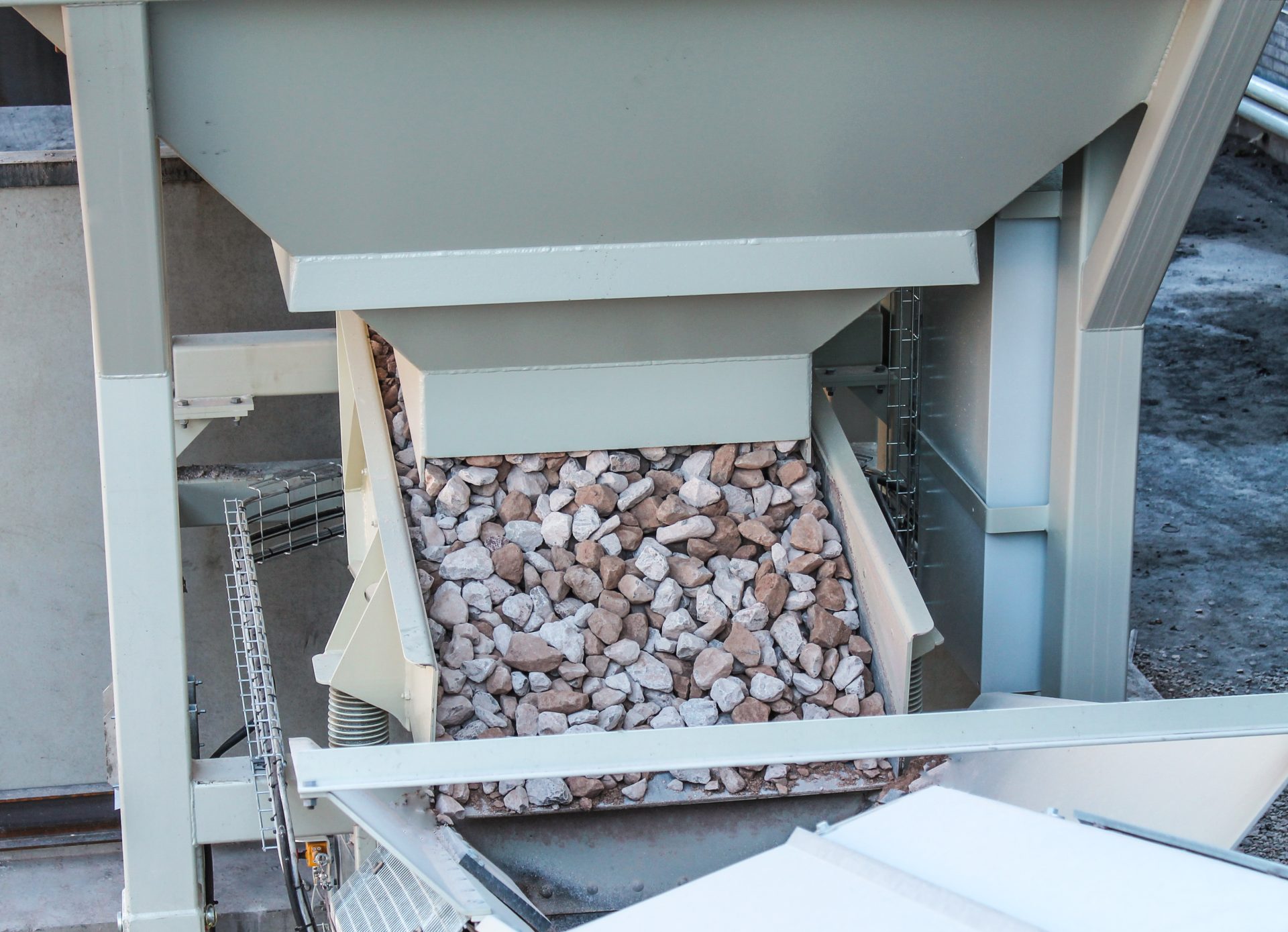Vibrating feeders
A vibrating feeder controls the flow of the bulk material. The machine is normally placed in a tunnel and intermediate layer, beneath feed hoppers or silos. The feeder vibrates the material out from there.
The vibration feeder is versatile, with a number of different advantages, as they produce a good spread of material, create an even flow, manage high temperatures, withstand heavy impacts and sharp material.
Together with our collaborative partners, we design the construction according to the conditions you have. It can, for example, concern the feeder’s wear material, type of operation, requirement for dosing and capacity.
- Crushed rock
- Ore
- Dressed ore
- Limestone
- Sand
- Cement
- Salt
- Coal
- Fertiliser
- Waste
- Scrap
- Wood chips
- Slag
- Grain
- Gypsum

The best solutions are produced when we think holistically
Our system of belt conveyors and other components enables us to tailor a solution for your specific plant and the material you are going to transport. Get in touch and we can provide an optimum solution for your transportation.




